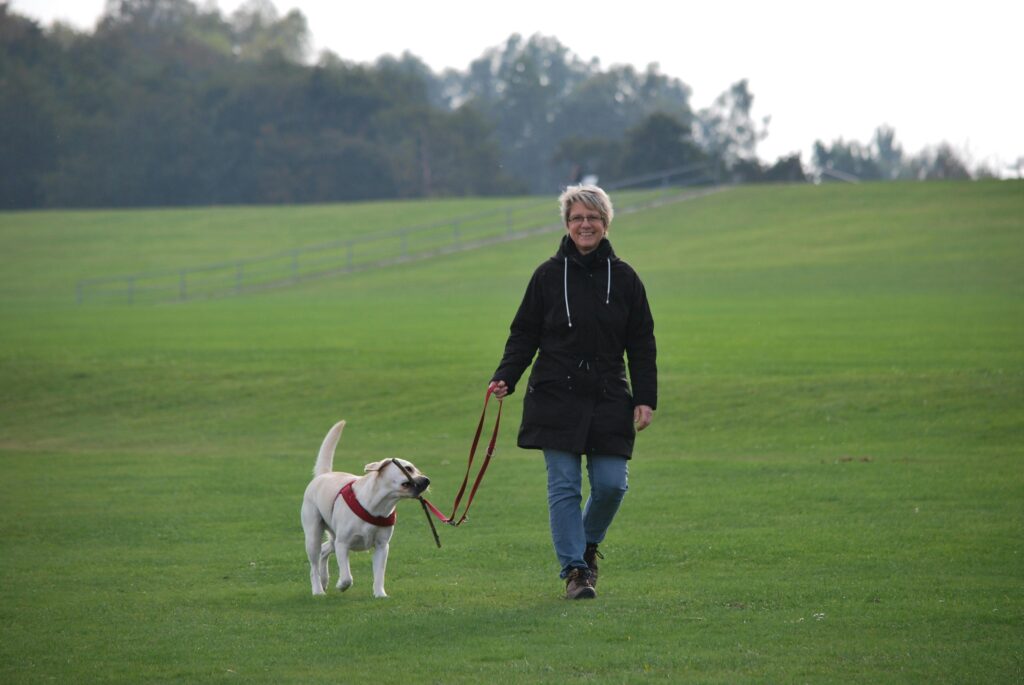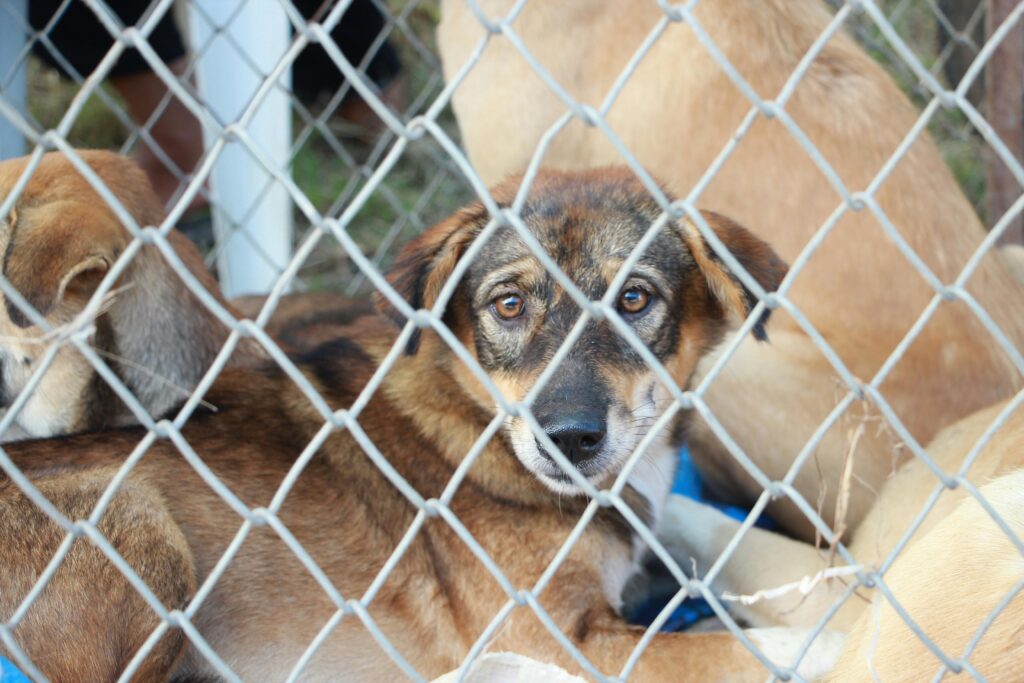
As our dogs age, we expect certain changes like slowing down or graying fur. However, sometimes our senior pets exhibit unusual behaviors that can leave us puzzled or concerned. These changes can be more than just quirks of old age—they might be signaling underlying health issues or emotional needs. In this blog, we’ll explore some of the uncommon behavioral changes in senior dogs, what they could mean, and when you should seek professional advice.
1. Increased Vocalization

What’s Happening:
- If your dog starts barking, whining, or howling more frequently than before, it could be a sign of anxiety, pain, or cognitive dysfunction. Senior dogs may vocalize more if they’re feeling disoriented or confused, especially at night.
What It Could Mean:
- Cognitive Dysfunction Syndrome (CDS): Often compared to Alzheimer’s in humans, CDS can cause disorientation, anxiety, and increased vocalization.
- Pain or Discomfort: Dogs might vocalize more if they’re experiencing pain due to arthritis or another chronic condition.
- Hearing Loss: As dogs lose their hearing, they might bark more because they can’t hear their own voice or other sounds around them.
2. Sudden Clinginess or Separation Anxiety

What’s Happening:
- A senior dog that was once independent might suddenly become more attached to you, following you from room to room or becoming anxious when left alone.
What It Could Mean:
- Vision or Hearing Loss: As senses decline, dogs may feel more vulnerable and seek comfort in staying close to their owners.
- Cognitive Decline: Increased dependence on familiar routines and people can be a response to confusion or disorientation caused by cognitive decline.
- Anxiety: Changes in routine, environment, or the loss of a companion can lead to increased anxiety in older dogs.
3. Changes in Sleep Patterns

What’s Happening:
- If your senior dog is sleeping more during the day and staying awake at night, or if they seem restless during sleep, it could be a sign of underlying issues.
What It Could Mean:
- Cognitive Dysfunction Syndrome: Dogs with CDS may experience disrupted sleep patterns, similar to “sundowning” in humans with dementia.
- Pain or Discomfort: Joint pain or other physical discomforts may prevent your dog from sleeping soundly through the night.
- Increased Anxiety: Anxiety can cause restlessness and changes in sleep behavior, especially if your dog is more sensitive to environmental changes as they age.
4. Pacing or Restlessness

What’s Happening:
- Pacing or restlessness, especially at night, can be a distressing sign in senior dogs. They might walk in circles or seem unable to settle down.
What It Could Mean:
- Cognitive Dysfunction Syndrome: Disorientation and confusion can lead to restless behavior, particularly in the evenings.
- Pain or Discomfort: Physical discomfort, such as from arthritis or digestive issues, can cause dogs to pace in an attempt to find a comfortable position.
- Anxiety or Stress: Changes in routine, environment, or the loss of a companion can increase stress levels, leading to restless behavior.
5. Sudden Aggression or Irritability

What’s Happening:
- A senior dog that has always been gentle might suddenly become snappy, growly, or show signs of aggression, even towards familiar people or other pets.
What It Could Mean:
- Pain: Unexplained aggression often stems from pain or discomfort, which can make a dog more sensitive to touch or interaction.
- Cognitive Decline: Confusion or fear from cognitive decline can lead to defensive behavior, especially if the dog feels threatened or cornered.
- Vision or Hearing Loss: If a dog can’t see or hear well, they might be startled more easily, leading to aggressive reactions.
6. Loss of Interest in Social Interaction

What’s Happening:
- If your dog seems to withdraw from social interaction, avoids playtime, or doesn’t greet you with the usual enthusiasm, it could be a sign of deeper issues.
What It Could Mean:
- Depression: Dogs can experience depression, particularly if they’ve lost a companion or their routine has changed significantly.
- Pain or Discomfort: Physical ailments may cause your dog to be less interested in activities that were once enjoyable.
- Cognitive Decline: Reduced interest in social interaction can also be a sign of cognitive dysfunction, as the dog may become less aware of or interested in their surroundings.
7. Excessive Grooming or Licking

What’s Happening:
- A senior dog that suddenly starts licking or grooming themselves excessively might be trying to self-soothe or could be reacting to physical discomfort.
What It Could Mean:
- Allergies or Skin Conditions: Older dogs can develop allergies or skin conditions that cause itching, leading to excessive licking.
- Pain: Dogs often lick areas of their body that are painful, such as joints affected by arthritis.
- Anxiety: Excessive grooming can be a sign of anxiety, especially if it coincides with other stress-related behaviors.
8. New Phobias or Fears

What’s Happening:
- If your dog suddenly develops new fears, such as a fear of thunderstorms, loud noises, or even certain places in the house, it could indicate underlying anxiety or sensory decline.
What It Could Mean:
- Cognitive Decline: Cognitive dysfunction can make dogs more sensitive to stimuli and cause new fears or phobias.
- Hearing or Vision Loss: As senses deteriorate, dogs might become more startled by or fearful of things they don’t understand or can’t see/hear properly.
- Anxiety: Generalized anxiety can cause dogs to develop new fears, especially if their environment or routine has changed.
9. Changes in Appetite or Eating Habits

What’s Happening:
- A sudden change in your dog’s appetite, whether it’s increased or decreased, should be monitored closely.
What It Could Mean:
- Dental Issues: Pain from dental problems can make eating uncomfortable, leading to a decrease in appetite.
- Metabolic or Hormonal Changes: Conditions like hypothyroidism or diabetes can cause changes in appetite.
- Digestive Issues: Gastrointestinal problems, common in older dogs, can lead to changes in eating habits, including selective eating or food avoidance.
10. Sudden Disobedience or Loss of Training

What’s Happening:
- If your well-trained dog starts ignoring commands, having accidents indoors, or displaying other signs of disobedience, it might be more than just stubbornness.
What It Could Mean:
- Cognitive Dysfunction Syndrome: Dogs with CDS might forget previously learned commands or where they are supposed to relieve themselves.
- Hearing or Vision Loss: A dog that can’t hear or see well might appear to be ignoring commands when they simply aren’t aware of them.
- Pain or Discomfort: Physical pain can make it difficult for dogs to comply with commands or follow routines they previously adhered to.
Conclusion: When to Seek Help
It’s essential to monitor these unusual behavioral changes and consult with your veterinarian if you notice any of them in your senior dog. Early intervention can make a significant difference in managing age-related conditions and ensuring your dog’s quality of life. Remember, while some changes are a natural part of aging, others may signal a more serious issue that needs attention.
By staying vigilant and understanding what these behaviors might mean, you can help your senior dog age gracefully and comfortably.
